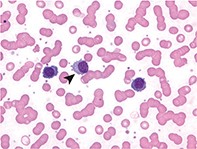Peer Reviewed
Feature Article Haematology
Investigating normocytic normochromic anaemia in adults
Abstract
In most cases of normocytic anaemia, a combination of clinical acumen, logic and a few well considered investigations will establish the diagnosis. Haematological referral of the patient and bone marrow examination may be needed in rare cases.
Key Points
- Normocytic normochromic anaemia is common and has many possible causes.
- Its presence in a patient should alert the clinician to the possibility of organic disease.
- In most cases the cause can be elucidated on the basis of the clinical history and examination, together with a few simple laboratory tests.
- In more complicated cases, communication between the clinician and the laboratory haematologist is vitally important.
- In carefully selected cases, referral to a haematologist and/or bone marrow examination may hold the key to the diagnosis.

